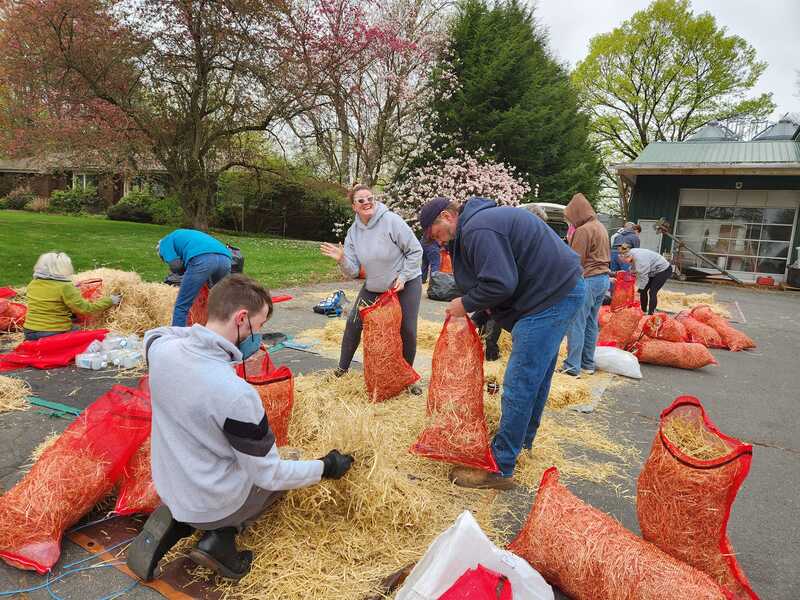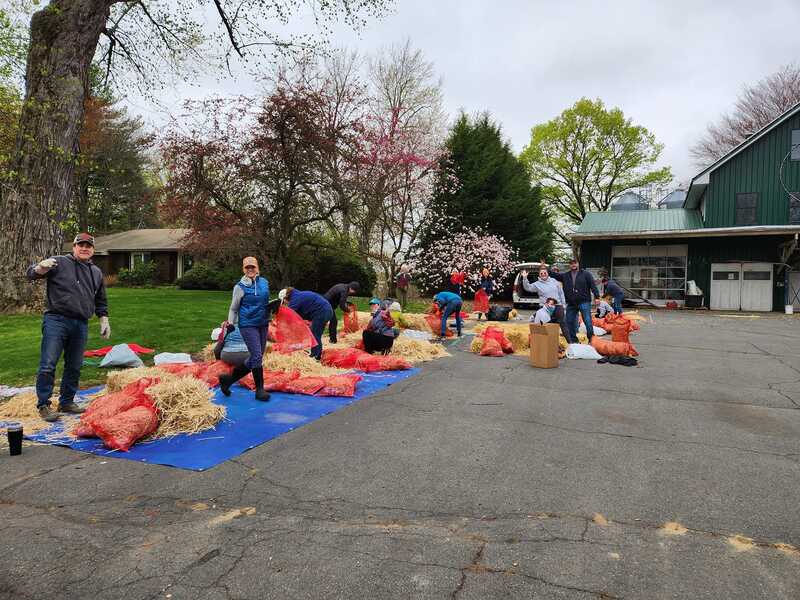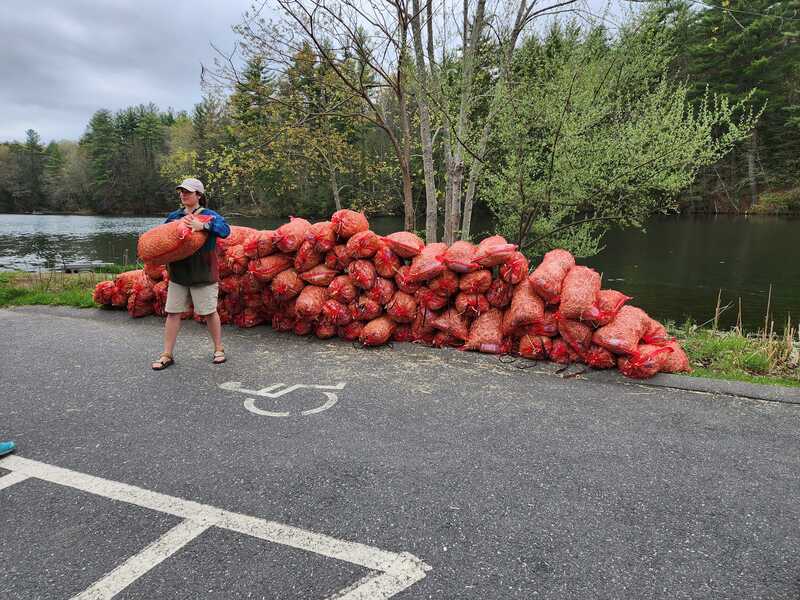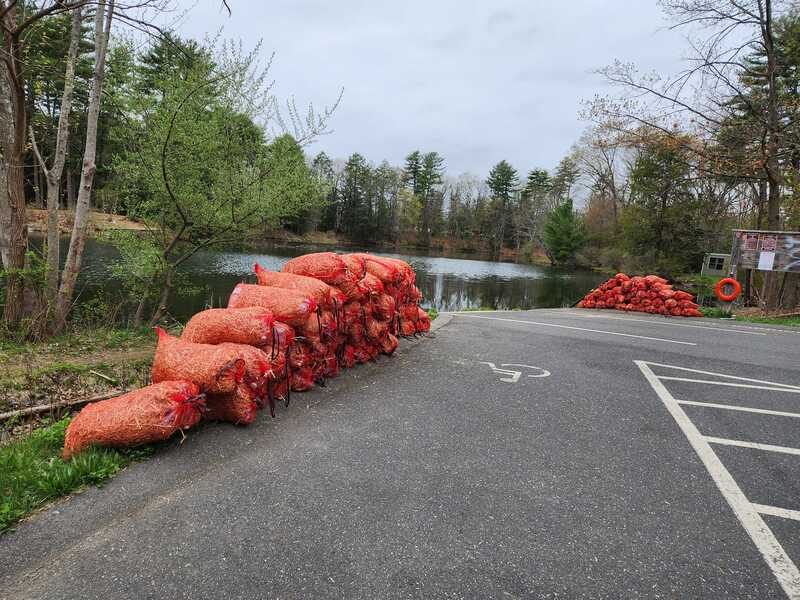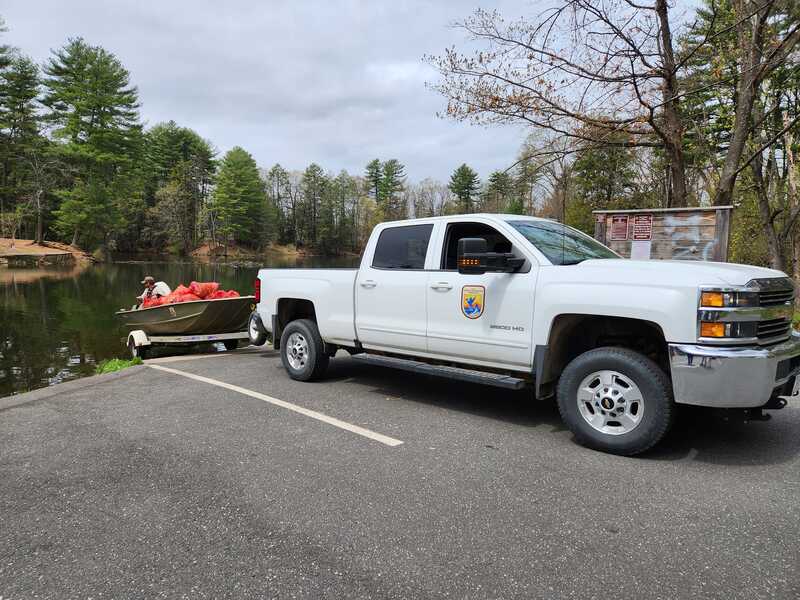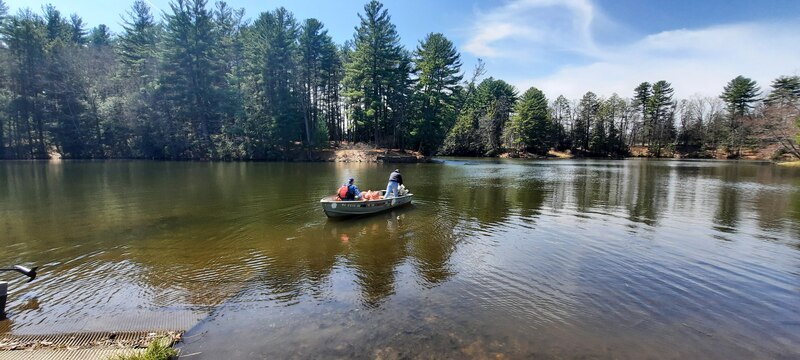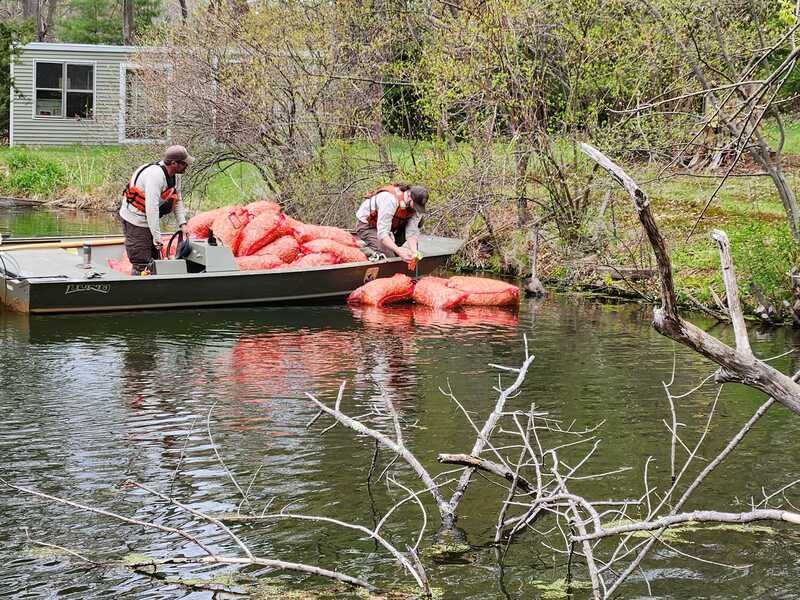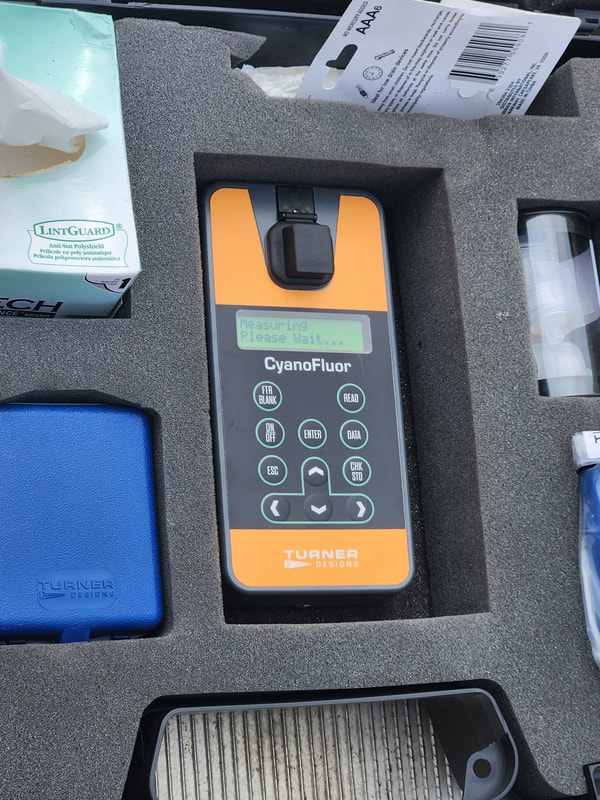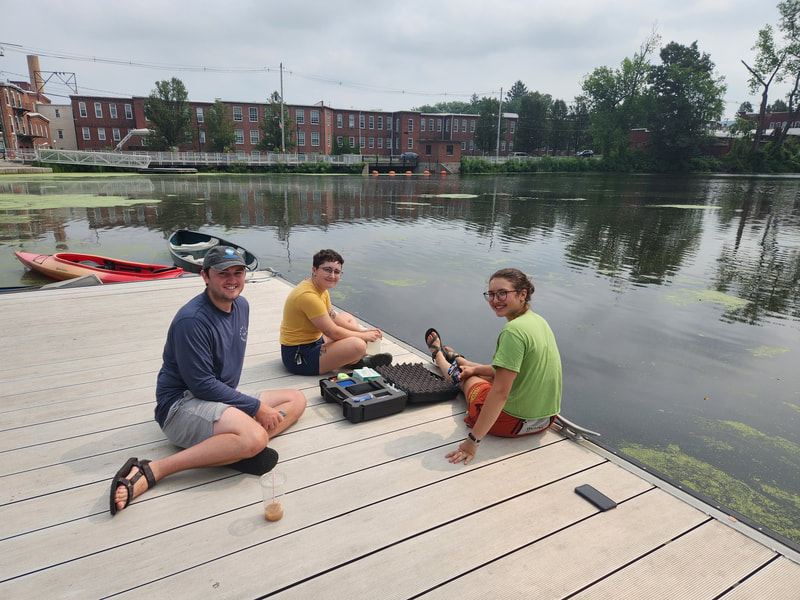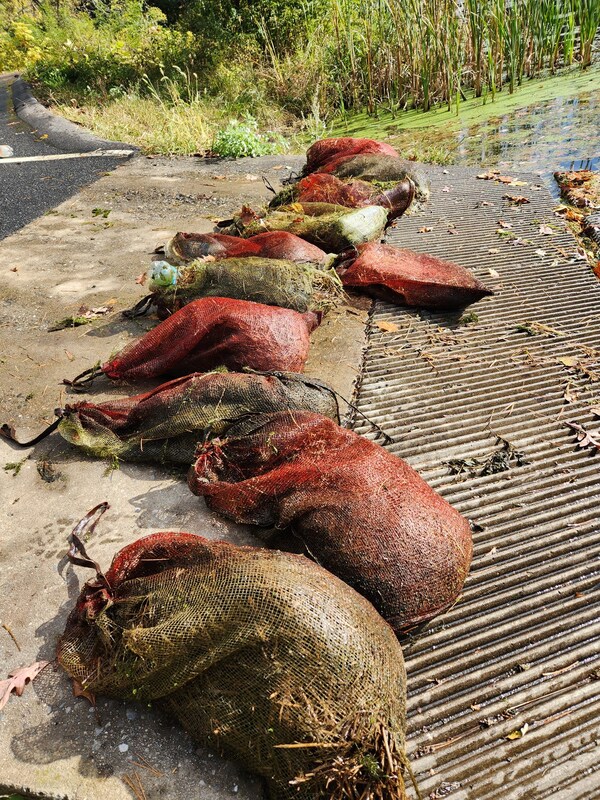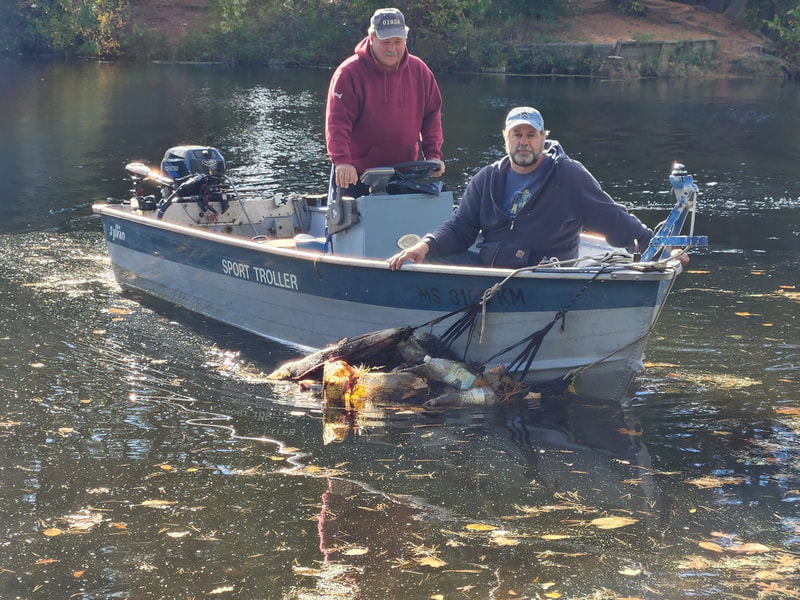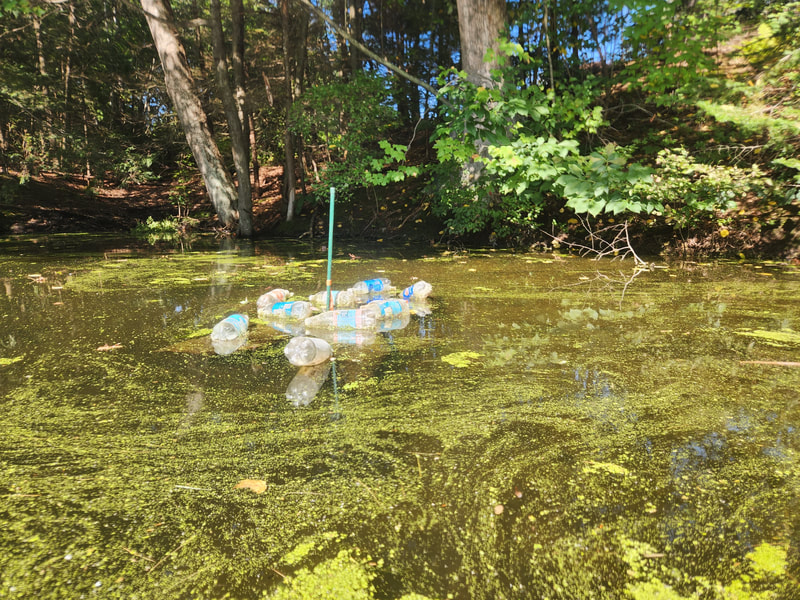How does Barley straw work? As barley straw slowly decomposes under aerobic conditions it releases a steady flow of molecules that prevent the growth/ division of single cell photosynthetic organisms including many types of Cyanobacteria as well as some green algae. The main pathway identified is decomposition of lignin to hydrogen peroxide . Very low concentrations ( about 2 ppm) are effective at suppressing Cyanobacteria growth and have no known effects on any higher organisms such as green plants or any animals.
See process below for Barley straw deployment, from stuffing bags to putting in pond, testing and removal.
Barley straw deployment has been done in 2022, 2023 and 4/20/2024.
See process below for Barley straw deployment, from stuffing bags to putting in pond, testing and removal.
Barley straw deployment has been done in 2022, 2023 and 4/20/2024.
Connecticut River Conservancy - Click here - Cyanobacteria monitoring report includes Nashawannuck Pond
December 11, 2023 Aliki Fornier
December 11, 2023 Aliki Fornier
Easthampton, MA - Spectrum News 1 - click here - Connecticut River Conservancy taking a new approach to monitoring the spread of Cyanobacteria
July 28, 2023 Richard Damas
July 28, 2023 Richard Damas
Blue-Green Planet: It’s a cyanobacterial world, and we just live on it. - Science in the News
September 26, 2019 by Olivia Foster Rhoades
September 26, 2019 by Olivia Foster Rhoades
|
City of Easthampton Board of Health & Nashawannuck Pond Steering Committee Cyanobacteria testing protocol
|
| ||||||

